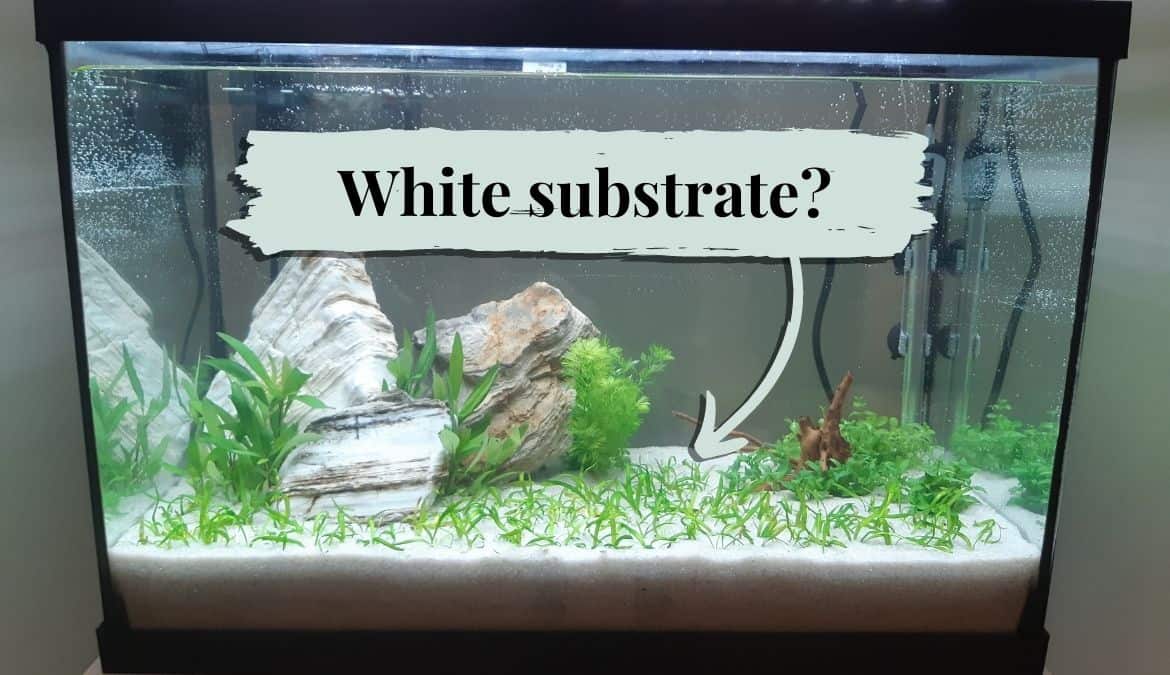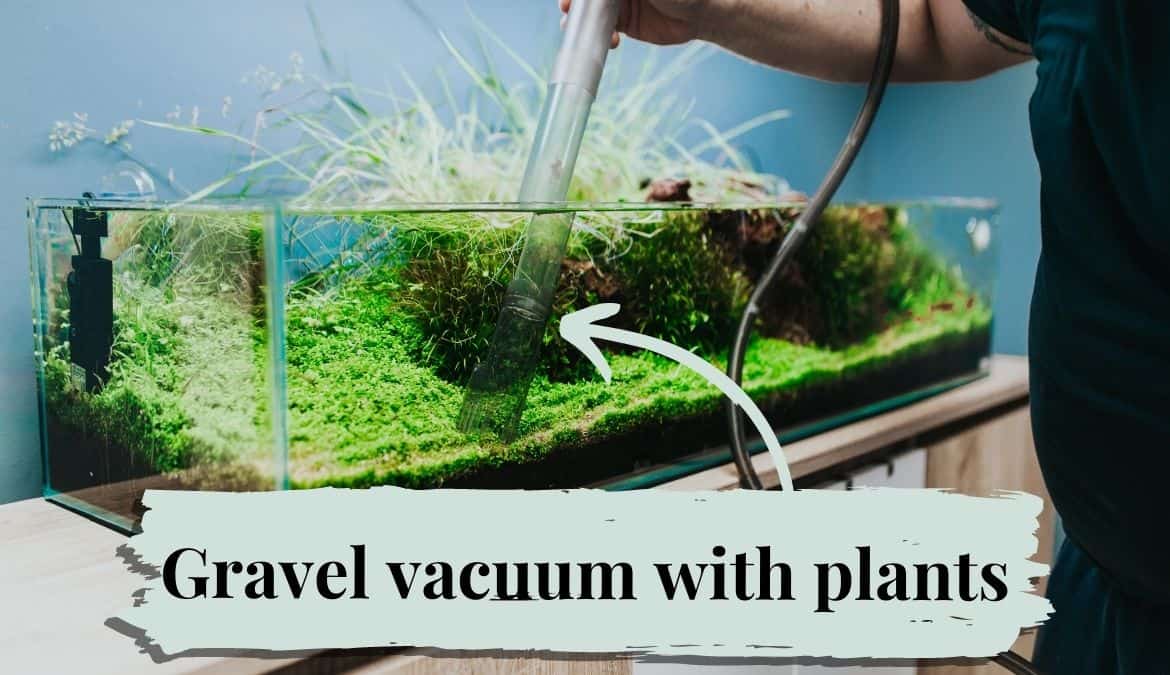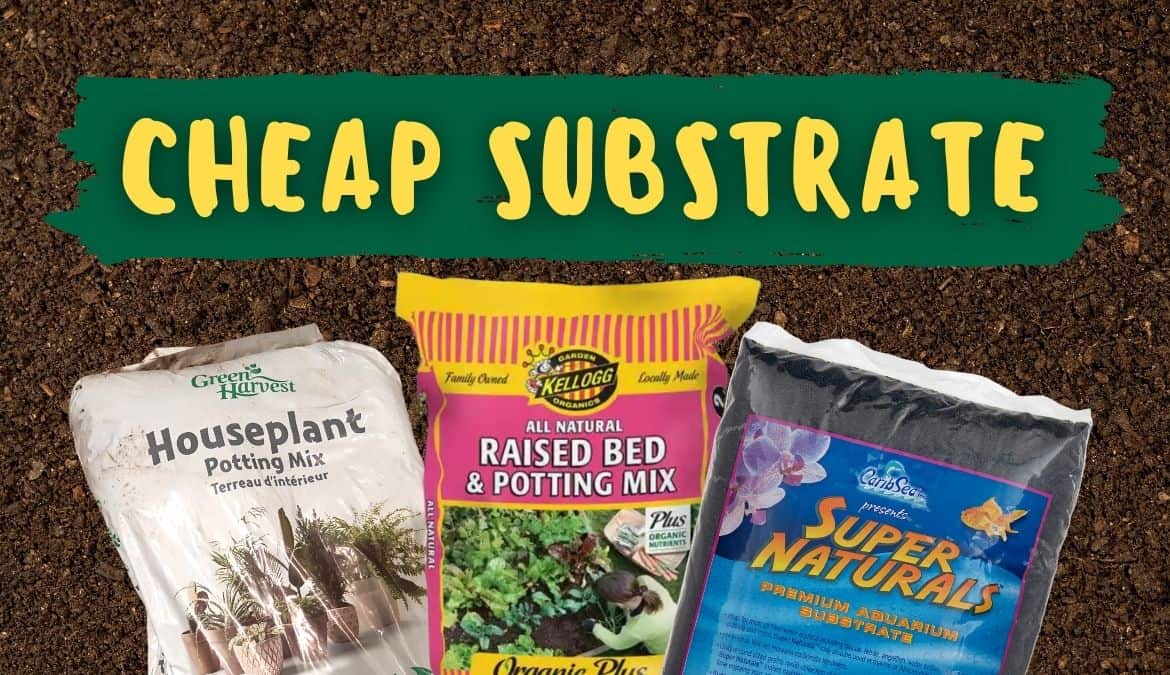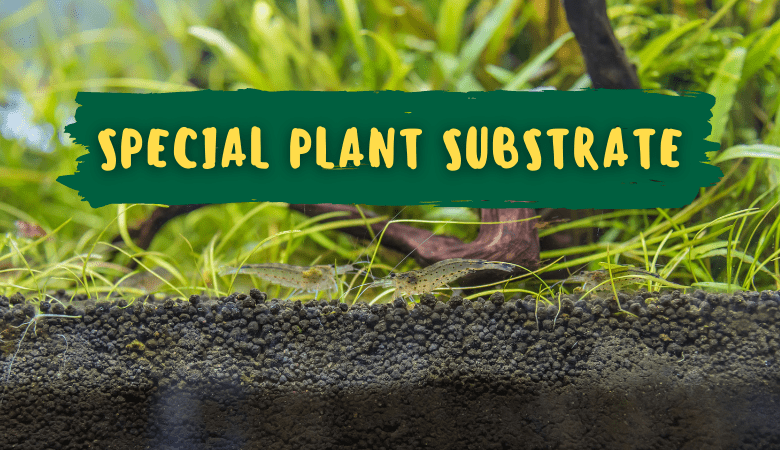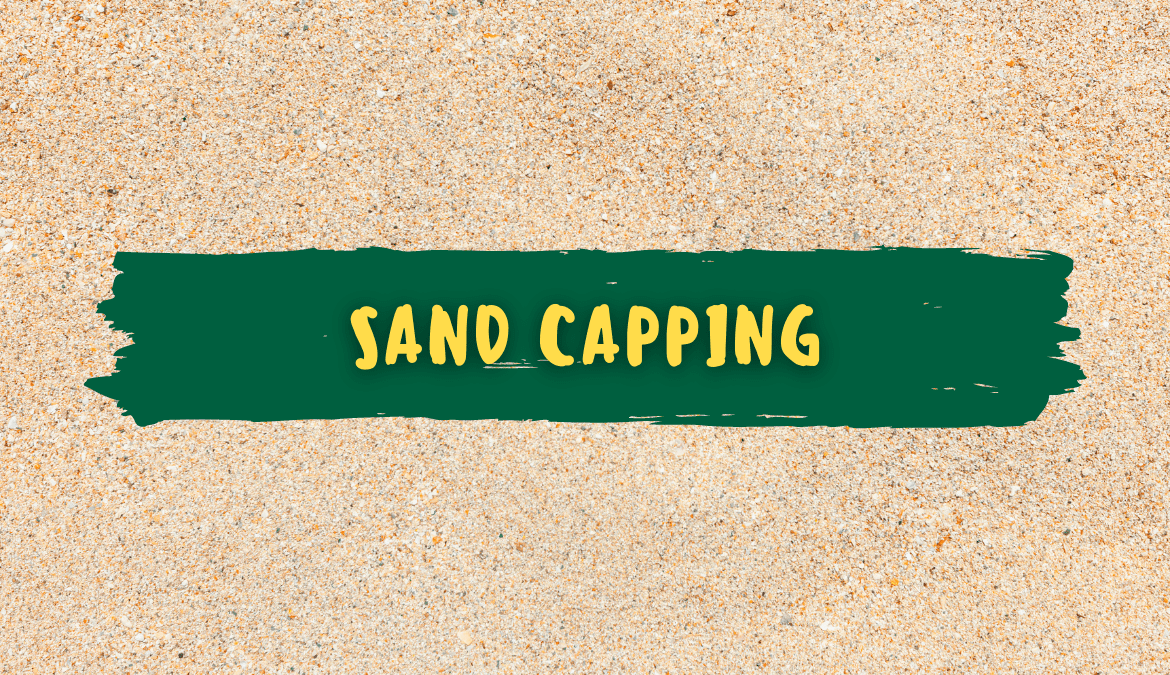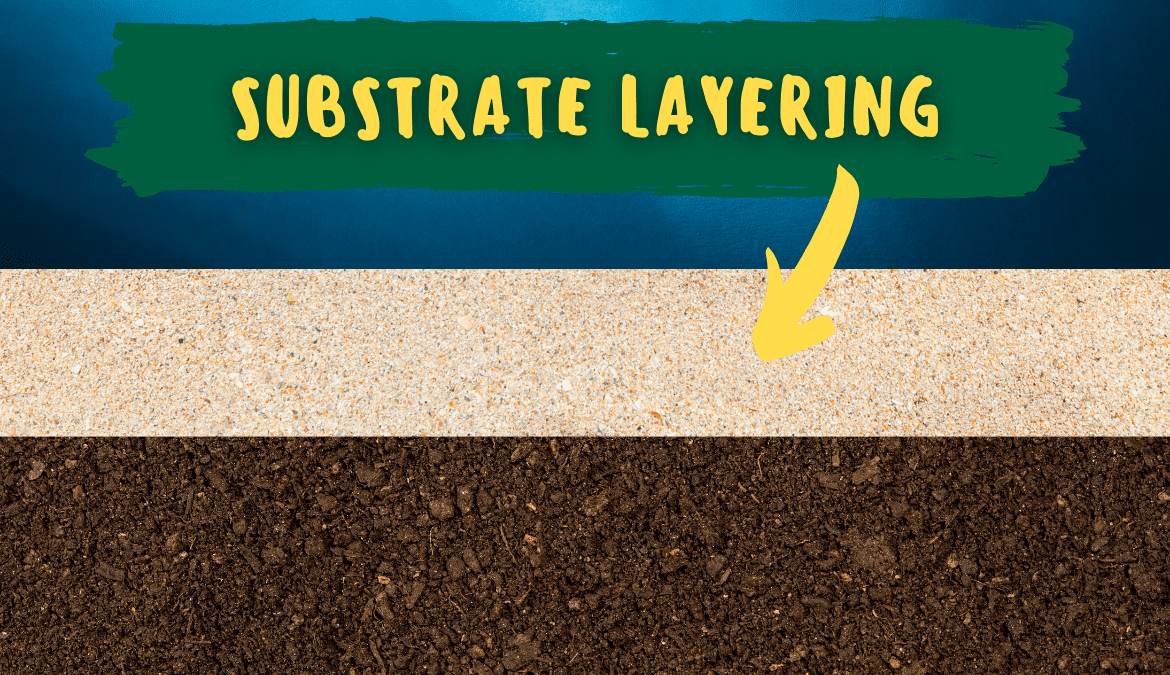A layer of sand can be put over other aquarium substrate to make it easier to plant in, to achieve a specific look, and to promote the growth of beneficial anaerobic bacteria. Blasting sand, pool filter sand, commercial aquarium sand and other sand varieties can be safely used as sand caps.
In this article, we will explore how to effectively use a top layer of sand substrate for planted aquariums.
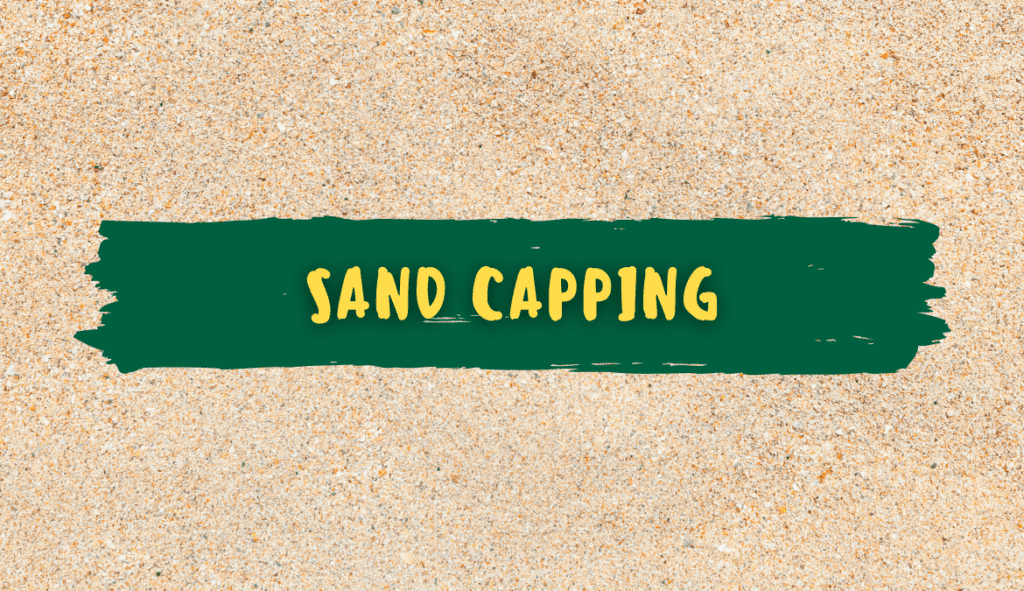
Contents
Why would you want to put sand over a substrate?
It’s safer for bottom dwellers
Its small grain size makes it much safer for bottom dwellers, such as bristlenose plecos, who will forage along the surface all day long. Some gravel substrates can contain sharp edges that might pose a risk for bottom dwellers.
It’s easier to plant in
Sand is by far the easiest substrate to plant in because of its small grain size and compact nature. Many aquasoil substrates have larger grain sizes and are very light in weight, making it difficult to anchor rooted plants.
Comes in a variety of colors
You can usually find sands in a variety of natural and vibrant colors for those who want to customize the look of their tank. Most planted tank base substrates ar brown or black, which some people don’t prefer. So it can be nice to have colored sand options.
Effective at creating anoxic zones
The main reason we cover substrate with sand isi to create an anoxic zone on the bottom layer of our tank. These are regions that contain no oxygen.
A 2-inch sand cap will be thick enough to create these anoxic pockets, where beneficial anaerobic bacteria will colonize over time. These help to reduce nitrate levels.
What types of substrate can you put sand over?
If you’re using sand to cover another substrate, then your tank probably contains live plants. In this case, we recommend using a nutrient-rich base layer substrate so your plants receive the macro and micronutrients they need to thrive.
Otherwise, your plants will start showing signs of nutrient deificiency and may eventually die off altogether.
Organic soils
We’ve had the most success using organic garden soil as a base layer substrate. It contains a substantial amount of nutrients for plants to develop healthy root systems.
This substrate requires a good 2-inches of sand or gravel cap to ensure it doesn’t leech into the water column.
Aquasoils
Commercial aquasoils are another great base layer option for the same reasons – they provide excellent nutrition for plant growth. We have good experiences using FLuval Stratum, but would also suggest CaribSea Eco-Complete or ADA Amazonia.
What sand is safe for aquariums?
Aquarium substrate sand
The safest option is to use commercially designed aquarium sand, such as the Super Naturals brand we used in our 20-gallon dirted tank.
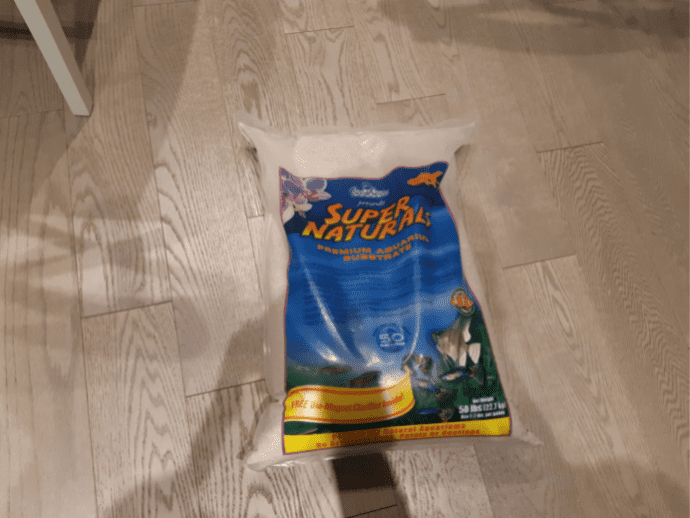
This eliminates any risks associated with using products not designed for aquarium use.
Pool filter sand
Pool filter sand is a great alternative because it has a slightly larger grain size than playground sand. This prevents it fromclumping together and allows for more succeessful plant root growth.
Blasting sand
Blasting sand is an excellent inert option as well. It’s used as an abrasive to polish surfaces. As a result, it’s designed to have a very high hardness factor.
Many fishkeepers believe that blasting sand poses risks to bottom dwellers because it has sharp edges. This is a myth due to the sand’s association with sandblasting. In reality, it’s used in sandblasting because of it’s hardness factor.
It’s an excellent and inexpensive option.
Playground sand
Playground sand can certainly be used as well, but tends to be more messy than more sands. We recommend giving it a good rinse before adding into your aquarium.
Myths of using sand substrate
It may produce harmful anaerobic bacteria
A thick layer of sand may create an anoxic zone at the bottom of your tank, which will allow anaerobic bacteria to growth. There is beneficial nitrate-reducing anaerobic bacteria that lower nitrate concentrations.
There are also sulfate-reducing anaerobic bacteria that produce hydrogen sulfide gas, which is toxic to fish. This is what concerns some fishkeepers.
What they don’t realize is that hydrogen sulfide is safely and rapidly converted into harmless sulfate as it rises through the oxygen-rich upper substrate layers and oxygen rich water column.
Plant roots can’t grow in sand
Some fishkeepers believe that sand is too compact to allow successful root growth. This is simply not true. What causes root-feeding plants to suffer is a lack of proper macro and micronutrients.
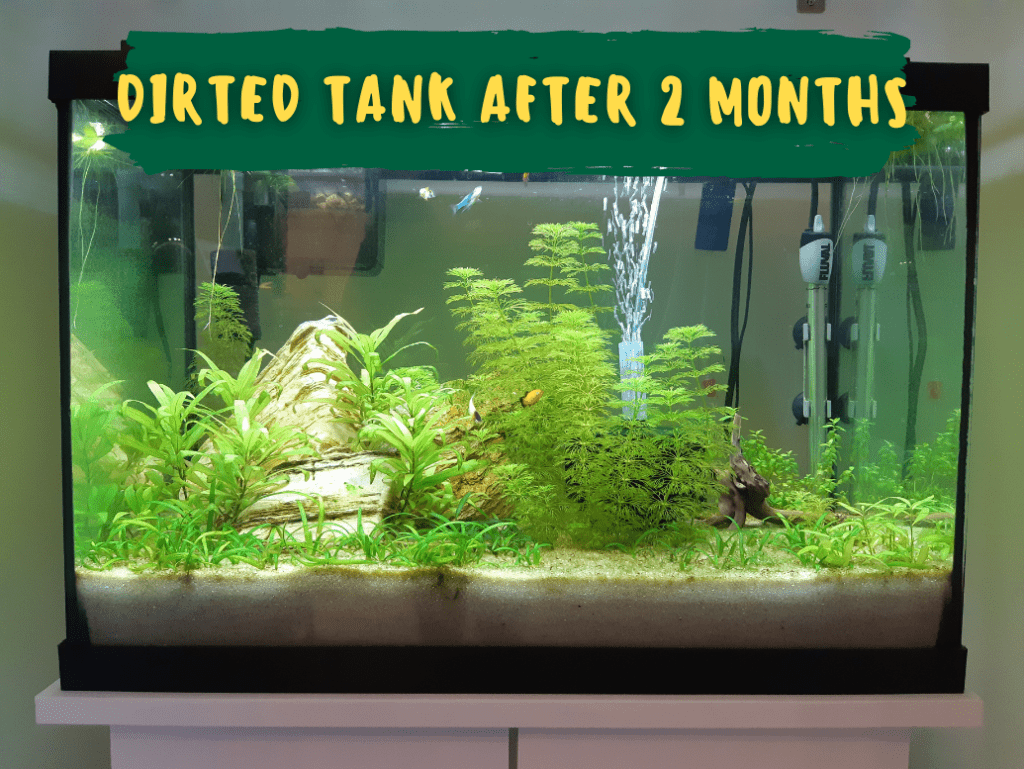
Using sand by itself will not provide pllants with adequate nutrition. But using sand to cover a nutrient-rich base layer will cause roots to grow downwards to reach their needed nutrition.


